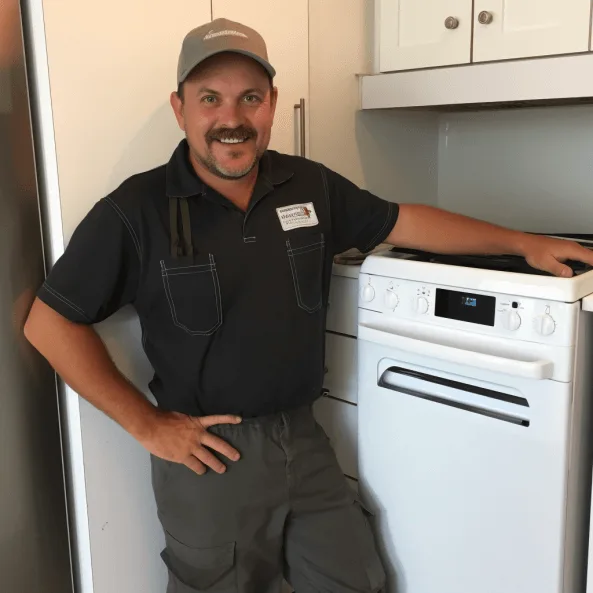Are you weighing the pros and cons of heating your home with a heat pump versus a gas furnace? You’re not alone. Many homeowners face this tough decision, especially when it comes to balancing comfort and cost. With energy prices fluctuating and environmental concerns on the rise, it’s crucial to know what you’re getting into.
Key Takeaways
- Comparison of Systems: Heat pumps transfer heat efficiently and offer cooling capabilities, while gas furnaces generate heat by burning natural gas, making them suitable for colder climates.
- Cost Analysis: Initial installation for heat pumps ranges from $3,000 to $8,000, while gas furnaces generally cost between $2,500 and $6,000; ongoing operating costs also vary significantly based on energy prices.
- Energy Efficiency: Heat pumps typically achieve energy efficiency ratings between 300% and 400%, resulting in lower energy bills compared to gas furnaces, which may offer annual heating costs between $500 and $1,500.
- Environmental Impact: Heat pumps are more environmentally friendly, relying on electricity and reducing carbon emissions, while gas furnaces release greenhouse gases during operation.
- Climate Suitability: Heat pumps are ideal for moderate climates, while gas furnaces provide reliable heating for extremely cold temperatures.
- Long-Term Savings: While heat pumps may have higher initial costs, their lower operating expenses can lead to significant long-term savings, especially in areas with fluctuating gas prices.
Overview of Heating Systems
Heating systems vary widely, each offering unique benefits and challenges. Understanding these differences helps you determine which option best suits your home and lifestyle.
Heat Pumps
Heat pumps transfer heat instead of generating it. They draw heat from the air, ground, or water and circulate it indoors. Their efficiency makes them a popular choice for moderate climates. Common benefits include:





- Energy Efficiency: Heat pumps can achieve efficiency ratings of up to 300%.
- Cooling Capabilities: Many heat pumps also provide cooling in the summer, offering dual functionality.
- Environmentally Friendly: Using renewable energy sources reduces carbon emissions.
Gas Furnaces
Gas furnaces generate heat by burning natural gas. They work by heating air and distributing it throughout your home. Key characteristics of gas furnaces include:
- High Heating Capacity: Gas furnaces can quickly heat large spaces, making them suitable for colder climates.
- Lower Initial Costs: The installation costs for gas furnaces tend to be lower compared to heat pumps.
- Dependable Performance: They operate effectively even during extremely low temperatures.
Comparison Factors
When comparing heat pumps and gas furnaces, consider the following factors:
- Operating Costs: Analyze your local energy prices to assess long-term costs. Heat pumps generally offer lower energy bills, while gas prices can fluctuate.
- Installation Costs: Factor in installation costs, which vary based on the system and your home’s configuration.
- Climate Suitability: Evaluate your climate. Heat pumps excel in moderate climates, while gas furnaces perform well in colder regions.
Evaluating these aspects helps you decide which system aligns with your heating needs, budget, and environmental preferences.
Cost of Heat Pumps
Understanding the cost associated with heat pumps involves looking at both initial installation costs and ongoing operating expenses.
Initial Installation Costs
Initial installation costs for heat pumps typically range from $3,000 to $8,000, depending on unit type and home size. Central heat pumps might be on the higher end, while ductless mini-splits generally cost less. Installation complexity, including ductwork or electrical adaptations, can significantly affect the total cost. You might find additional expenses for permits or any necessary upgrades to your electrical panel. Comparing multiple quotes from licensed HVAC contractors helps ensure you’re making an informed decision.





Operating Expenses
Operating expenses for heat pumps vary with climate and energy costs. Heat pumps usually have lower operating costs than gas furnaces, primarily due to high energy efficiency ratings, often between 300% and 400%. This efficiency means that for every unit of electricity consumed, the system can produce multiple units of heating or cooling. On average, homeowners can expect electricity costs between $0.10 and $0.25 per kWh. In milder climates, these systems work effectively year-round, leading to cost savings. In extremely cold regions, performance may drop, and supplemental heating may incur additional costs. Regular maintenance can also help optimize efficiency and minimize operating costs.
Cost of Gas Furnaces
Gas furnaces often come with higher initial installation costs than heat pumps but can provide reliable heating when temperatures drop. Understanding these costs helps in deciding which system suits your home and budget best.
Initial Installation Costs
Initial installation costs for gas furnaces typically range from $2,500 to $6,000. Several factors influence this range. The furnace type, the size of your home, and the complexity of the installation play significant roles. Standard gas furnaces usually have lower upfront costs compared to high-efficiency models, which can cost more but offer long-term savings through reduced energy bills. Local labor rates also affect installation expenses, so checking multiple quotes from licensed professionals is beneficial.
Operating Expenses
Operating expenses for gas furnaces generally depend on gas prices and the furnace’s efficiency rating. On average, homeowners can expect annual heating costs between $500 and $1,500. High-efficiency furnaces, with AFUE ratings above 90%, can result in significant savings on gas bills compared to standard models, which may have ratings around 80%. Comparing local gas rates and potential increases is wise since energy prices fluctuate. Regular maintenance will also help avoid unexpected repairs and maintain efficiency, reducing operating costs over time.
Comparative Analysis
Understanding the cost differences between heat pumps and gas furnaces helps you make an informed heating decision for your home. Both systems have their advantages and drawbacks, making it essential to analyze their long-term savings and environmental impact.





Long-Term Savings
Heat pumps typically offer lower operating costs. Their energy efficiency ratings, often between 300% and 400%, translate to significant savings on energy bills, especially in moderate climates. For example, if you save $200 annually with a heat pump compared to a gas furnace, over ten years, you could save $2,000.
Gas furnaces, while generally lower in initial installation costs, can lead to higher long-term expenses. If natural gas prices rise, your annual heating costs could escalate from $500 to $1,500 or more, depending on usage. Homeowners should consider the efficiency of their furnace; models with an AFUE rating above 90% optimize fuel usage and contribute to savings over time.
Environmental Impact
Heat pumps present a more environmentally friendly option. They use electricity and transfer heat rather than burning fossil fuels, reducing greenhouse gas emissions. The switch to heat pumps has led to a 30% decrease in carbon footprints in regions that rely on renewable energy sources. When considering the environmental impact, look at your local electricity mix; if it includes renewable energy, the benefits increase.
Gas furnaces, however, release carbon dioxide and other emissions during operation. Although they offer reliability in colder climates, the environmental costs can be substantial. With growing concerns regarding climate change, transitioning to a heat pump may align better with sustainability goals. Evaluating local energy policies and incentives can further encourage eco-friendly choices in heating options.
Conclusion
Choosing between a heat pump and a gas furnace can feel overwhelming but it ultimately comes down to your specific needs and priorities. If you’re looking for energy efficiency and a lower carbon footprint heat pumps might be your best bet. They can save you money in the long run especially in milder climates.
On the other hand if you need reliable heating in colder areas gas furnaces could be more suitable despite potentially higher operating costs. Don’t forget to consider installation costs and local energy prices as they can impact your decision. Whichever option you choose make sure it aligns with your budget comfort and environmental values.
Frequently Asked Questions
What are the main differences between heat pumps and gas furnaces?
Heat pumps and gas furnaces differ in operation and efficiency. Heat pumps transfer heat and provide both heating and cooling, making them energy-efficient, especially in moderate climates. Gas furnaces, however, burn natural gas to generate heat, offering high heating capacity and reliability in cold conditions but usually higher long-term costs if gas prices rise.
How much does it cost to install a heat pump?
The installation cost for a heat pump typically ranges from $3,000 to $8,000. Factors such as the unit type, home size, and necessary modifications like ductwork or electrical adaptations can significantly influence the total cost.
What are the operating costs of gas furnaces?
Operating expenses for gas furnaces vary based on gas prices and efficiency ratings, averaging between $500 and $1,500 annually. High-efficiency models can lead to significant savings, especially compared to standard furnaces, due to better energy conservation.
Are heat pumps environmentally friendly?
Yes, heat pumps are generally considered more eco-friendly as they rely on electricity and produce fewer greenhouse gas emissions. They significantly lower carbon footprints, particularly in areas using renewable energy, making them a better choice for environmentally-conscious homeowners.
What should I consider when choosing between these heating systems?
When choosing between heat pumps and gas furnaces, consider your climate, budget, installation costs, long-term operating expenses, and environmental impact. Evaluating local energy prices and available incentives for eco-friendly systems can also guide your decision.

Hi, I’m Charlie, and I cover all things laundry here at Appliance Mastery.
I’ve spent over eight years working on washing machines, dryers, and dishwashers. I also have a degree in mechanical engineering, which helps me understand how these appliances really work.
I try to make every guide clear and practical. If you’re stuck with a noisy dryer or a leaking washer, I’ll help you figure out what’s wrong and how to fix it.
